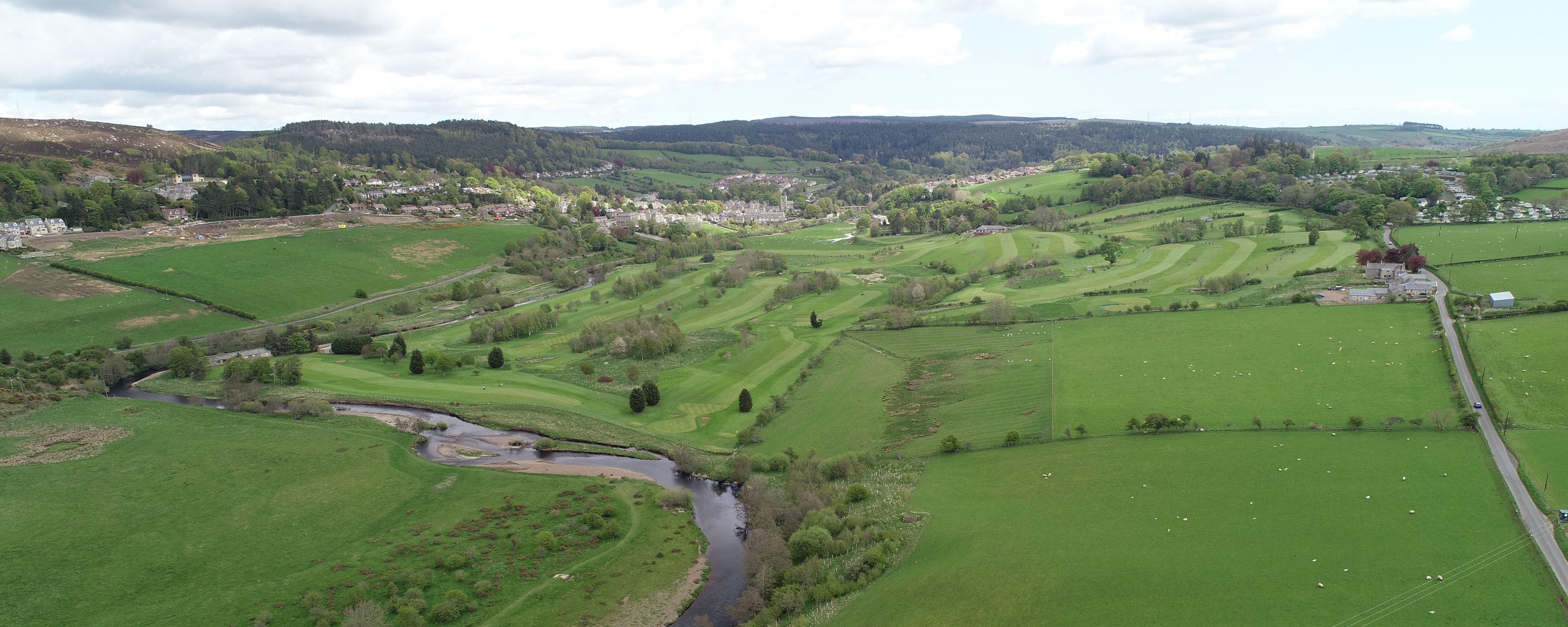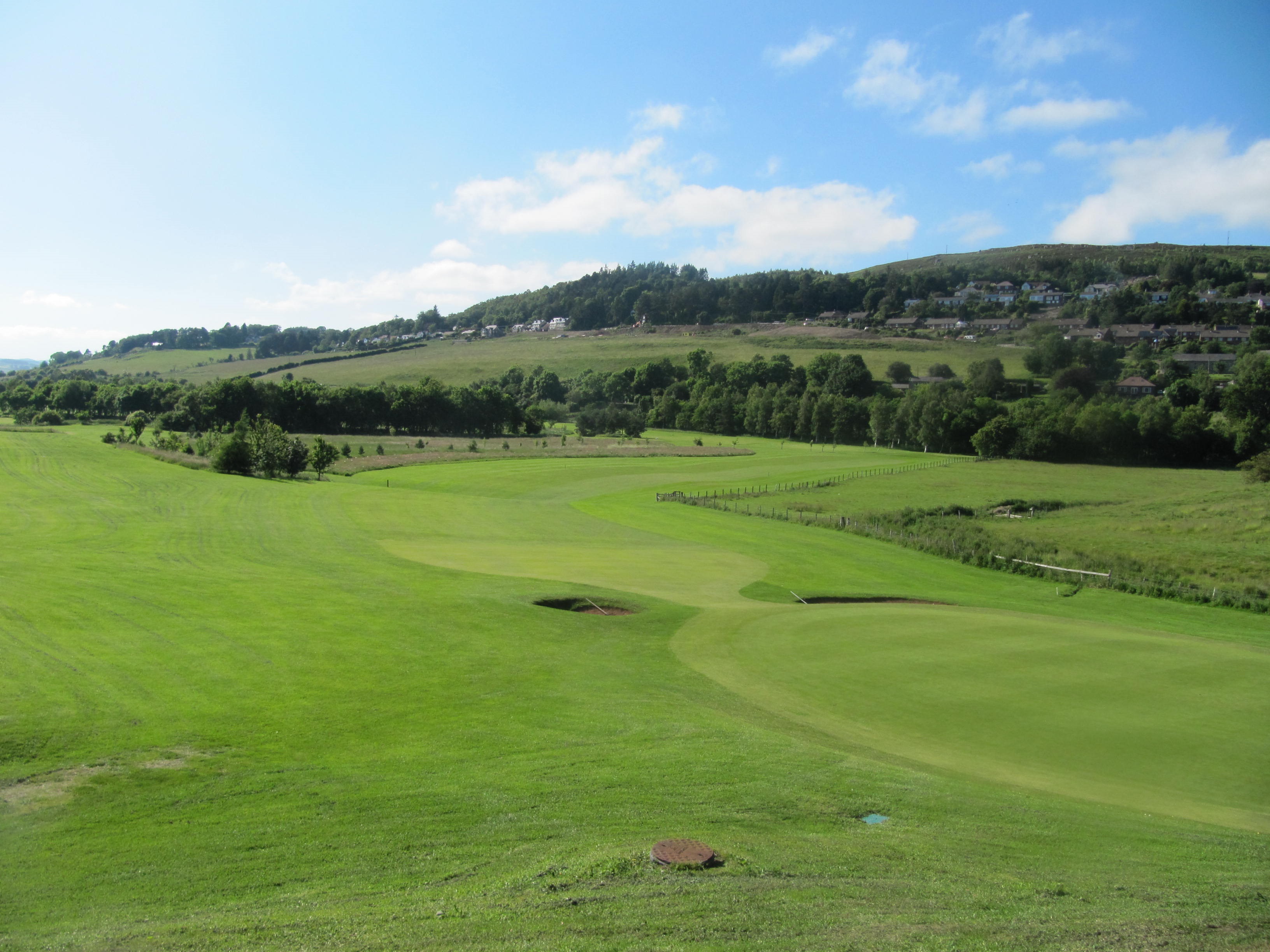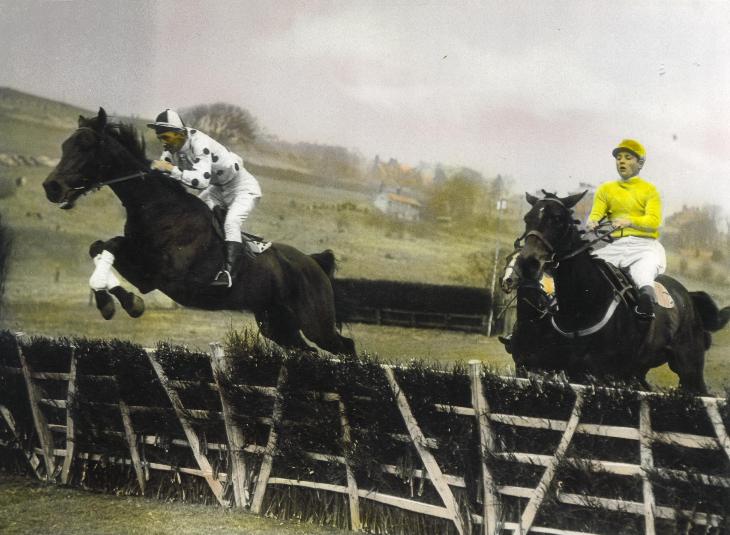Earliest meeting: April 1759
Final meeting: Saturday 10th April 1965
The Northumbrian town of Rothbury, on the River Coquet, is located 14 miles north west of Morpeth and 26 miles north north west of Newcastle. The earliest record of racing in the vicinity of the town was a three day meeting on Rothbury Haugh in April 1759 sponsored primarily by Lord Northumberland. Just a year later, on Monday 14th April 1760, a meeting was organised but only three horses were present. Races were held intermittently for the next century, seldom more than one day a year and often in conjunction with a town festival or fair. The first occasion racing received wider recognition was in 1869 when results were included in the Racing Calendar. The principal race was the Rothbury Hunt Cup over 2 ½ miles which went to Mr Dale’s Rebecca. The next year the Rothbury Hunt Cup went to Mr T Forster’s Cornustibij. The course, close to the River, was always prone to flooding, which was more of a problem when they only raced once a year and relied on the profit from that meeting. Furthermore, the course lacked basic facilities, including sufficient stabling for the horses. In the early 20th century the meetings were billed as ‘County of Northumberland Hunt meetings’, although this interchanged with ‘Rothbury races’ regulary. Racing ceased between 1915 and 1919 in line with the majority of courses, and again between 1939 and 1945, returning after the war had ended on Saturday 27th April 1946. The situation became dire in the early 1960s when racing was abandoned in consecutive years between 1962 and 1963 due to flooding, so it was no surprise when the course was listed amongst those which the Levy Board stated they would no longer support financially after 1966. In the end the final meeting was staged on Saturday 10th April 1965.
Tuesday 28th April 1870
Rothbury Hunt Cup over 2 ½ miles
1. Cornustibij, bay mare owned by Mr T Forster
2. Primrose, brown mare owned by Mr G Turnbull
3. Independent, bay horse owned by Mr C Robson
I am grateful to Stephen McCurrie for the rare racecard shown below, the result of the race is also included.
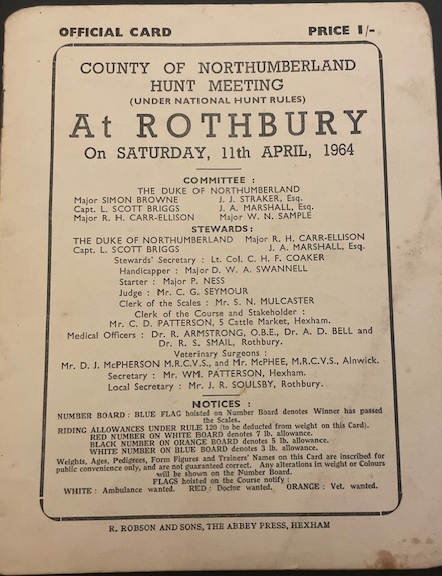
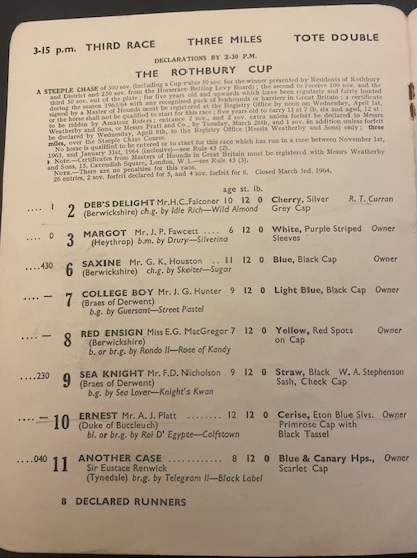
Saturday 11th April 1964
Rothbury Cup over 3 miles
1. SAXINE (3/1) ridden by Mr C Berry
2. DEB'S DELIGHT (4/1) trained by R T Curran
3. RED ENSIGN (6/1) trained by E McGregor
4. SEA KNIGHT (5/4 fav) trained by W A Stephenson
7 ran
Much of the information about this course has been found using internet research and is in the public domain. However, useful research sources have been:-
London Illustrated News
Racing Illustrated 1895-1899
The Sporting & Dramatic Illustrated
Northern Turf History Volumes 1-4 by J.Fairfax-Blakeborough
The Sporting Magazine
A Long Time Gone by Chris Pitt first published in 1996 ISBN 0 900599 89 8
Racing Calendars which were first published in 1727









